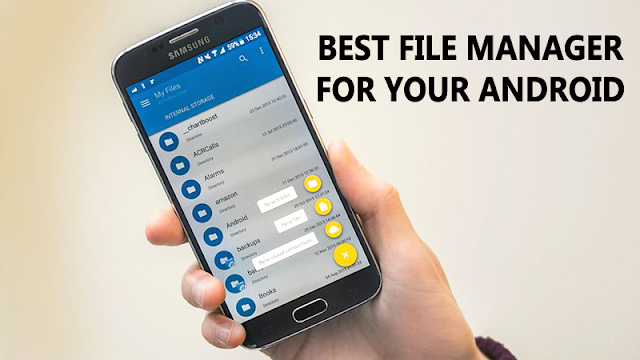
You get space for new apps, photos, videos, and music, and often, faster performance; when your phone is close to full, it tends to get sluggish. Android refers to this feature as storage, but file management is what it does.
Also Check: 7 Tips on How to Recover Deleted Photos On Android
Note: The directions below should apply no matter who made your Android phone: Samsung, Google, Huawei, Xiaomi, etc.
Here's everything you need to know about managing files and storage on Android.
- To access your files, you have to go to Settings and select Storage. Before you tap Storage, you can see right away how much room is available: X% used - X GB free. That same information is at the top of the Storage page.
- Tap the Free Up Space button beneath that information, and you'll see your files organized by category: Backed up photos & videos, Downloads, and Infrequently used apps, along with how many gigabytes each uses.
- The Backed up photos & videos option is all or nothing; you can't select specific files.
- Tap Downloads and you can see a list of PDFs and other documents.
- Tap Infrequently used apps, and you'll see a list of apps organized by how recently you've used them, with the apps you've ignored the longest at the top.
- Next, you can opt to turn on Smart Storage, which automatically deletes old photos and videos when your phone gets close to running out of space.
- Finally, there's a list of everything on your phone, in categories including music & audio, games, files, and system (files need to run your OS). Tap a category to view the apps associated with it, tap on an app, and you can clear the cache or clear data (files, settings, accounts, etc.) These actions can often fix problems with an app that's acting up.
To delete an unwanted app or one that isn't functioning properly you can visit the Google Play Store and tap on My Apps, select the app, and tap Uninstall.
Another method is to drag unwanted apps from the app drawer into the trash icon that appears when you press and hold an app. Unfortunately, you can't delete many pre-loaded apps, otherwise known as bloatware, without rooting your device.
It's always a good idea to backup your data first, though, in case you accidentally delete something important.
Another way to make space on your Android smartphone is to back up your pictures to Google Photos, which offers unlimited cloud storage and enables you to access your images on any device. For other files, you can offload them to Dropbox, Google Drive, or your cloud service of choice.

How it Stacks Up
The Android file manager is minimalist and can't compete with third-party apps like ES File Explorer (by ES Global) or Asus File Manager (by ZenUI, Asus Computer Inc.). ES File Explorer has an array of features including Bluetooth and Wi-Fi transfer, compatibility with popular cloud storage services, a remote file manager that lets you access phone files on your computer, a cache cleaner, and much more.
Asus File Manager shares many of those features including cloud storage integration, as well as file compression tools, a storage analyzer, and the ability to access LAN and SMB files.
Of course, if you want to access the system files, you'll need to root your smartphone and install a third-party file manager. Rooting your smartphone is a straightforward process, and the risks are relatively small. The benefits include the ability to manage all the files on your smartphone, remove bloatware, and more. ES File Explorer has a Root Explorer tool, which lets users control the whole file system, data directories, and permissions.
That said, if you just want to do a quick cleanup, as you would on a computer, the built-in tool does the trick.

Post a Comment